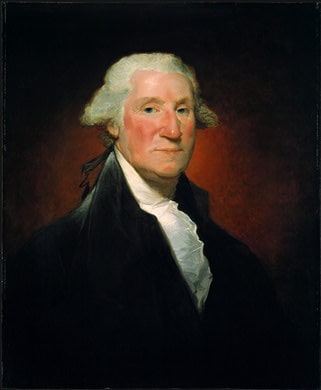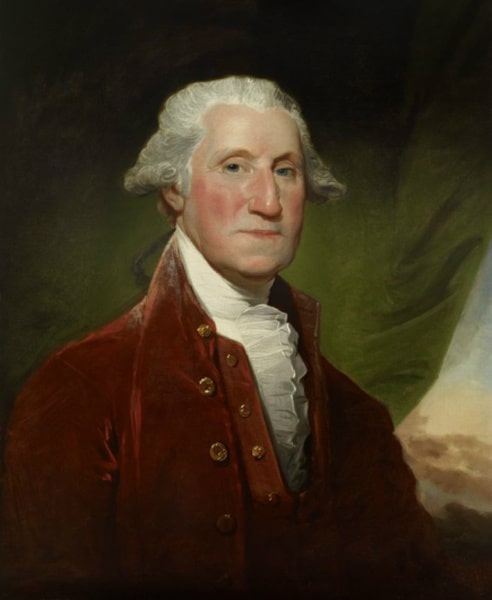Contents
Contents
Named for Samuel Vaughan, an American merchant living in London, who was the recipient of the original painting. Gilbert Stuart made 12 to 16 copies of the Vaughan painting and then stopped after he obtained commissions to paint new portraits of Washington.
Washington sat for Gilbert Stuart in Philadelphia between 1795 and 1796. These sittings resulted in three distinct images: the Vaughan
type (facing to his left), the Athenaeum
head (facing to his right — and used in reverse on the one dollar bill), and the Lansdowne
portrait (full-length).
1. George Washington (The Vaughan Portrait), 1795

Oil on canvas; 73 x 60.5 cm (28 3/4 x 23 13/16 in). National Gallery of Art, Washington, DC.
Named for Samuel Vaughan, an American merchant living in London, who was the recipient of the original painting made by Stuart.
2. George Washington (The Gibbs-Channing-Avery Portrait), begun 1795
Oil on canvas; 30 1/4 x 25 1/4 in. (76.8 x 64.1 cm). The Metropolitan Museum of Art, New York, NY.
Known by the names of its successive owners, this is one of the 12 to 16 copies of the Vaughan Portrait painted by Stuart.
3. George Washington, begun 1795
Oil on canvas. Colonial Williamsburg, Williamsburg, VA.
One of the 12 to 16 copies of the Vaughan Portrait painted by Stuart.
4. George Washington, 1795—96
Oil on canvas; 28.74 x 23.504 in. (73 x 59.7 cm). Winterthur Museum, Garden & Library, Winterthur, DE.
One of the 12 to 16 copies of the Vaughan Portrait painted by Stuart.
5. George Washington, 1795—96
Oil on canvas; 29 1/4 x 24 in. (74.3 x 61 cm). The Frick Collection, New York, NY.
One of the 12 to 16 copies of the Vaughan Portrait painted by Stuart. This canvas is thought to be the second of the two that Stuart painted for Vaughan. Note how the color and style of the suit is unique among the copies.







